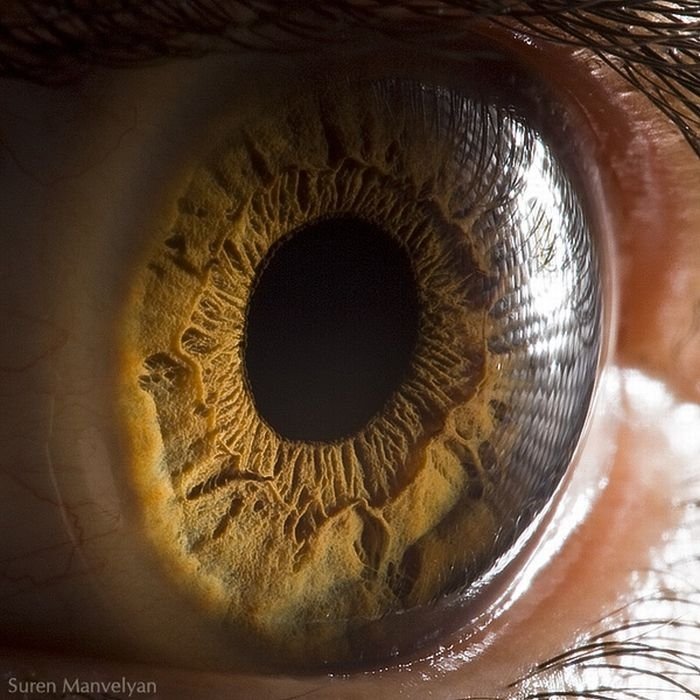|
|
Macro Eye By Suren Manvelyan
|
A compound eye may consist of thousands of individual photoreceptor units or ommatidia (ommatidium, singular). The image perceived is a combination of inputs from the numerous ommatidia (individual "eye units"), which are located on a convex surface, thus pointing in slightly different directions. Compared with simple eyes, compound eyes possess a very large view angle, and can detect fast movement and, in some cases, the polarization of light. Because the individual lenses are so small, the effects of diffraction impose a limit on the possible resolution that can be obtained. This can only be countered by increasing lens size and number. To see with a resolution comparable to our simple eyes, humans would require compound eyes which would each reach the size of their head.
Compound eyes fall into two groups: apposition eyes, which form multiple inverted images, and superposition eyes, which form a single erect image. Compound eyes are common in arthropods, and are also present in annelids and some bivalved molluscs.
Compound eyes, in arthropods at least, grow at their margins by the addition of new ommatidia.
|
|









